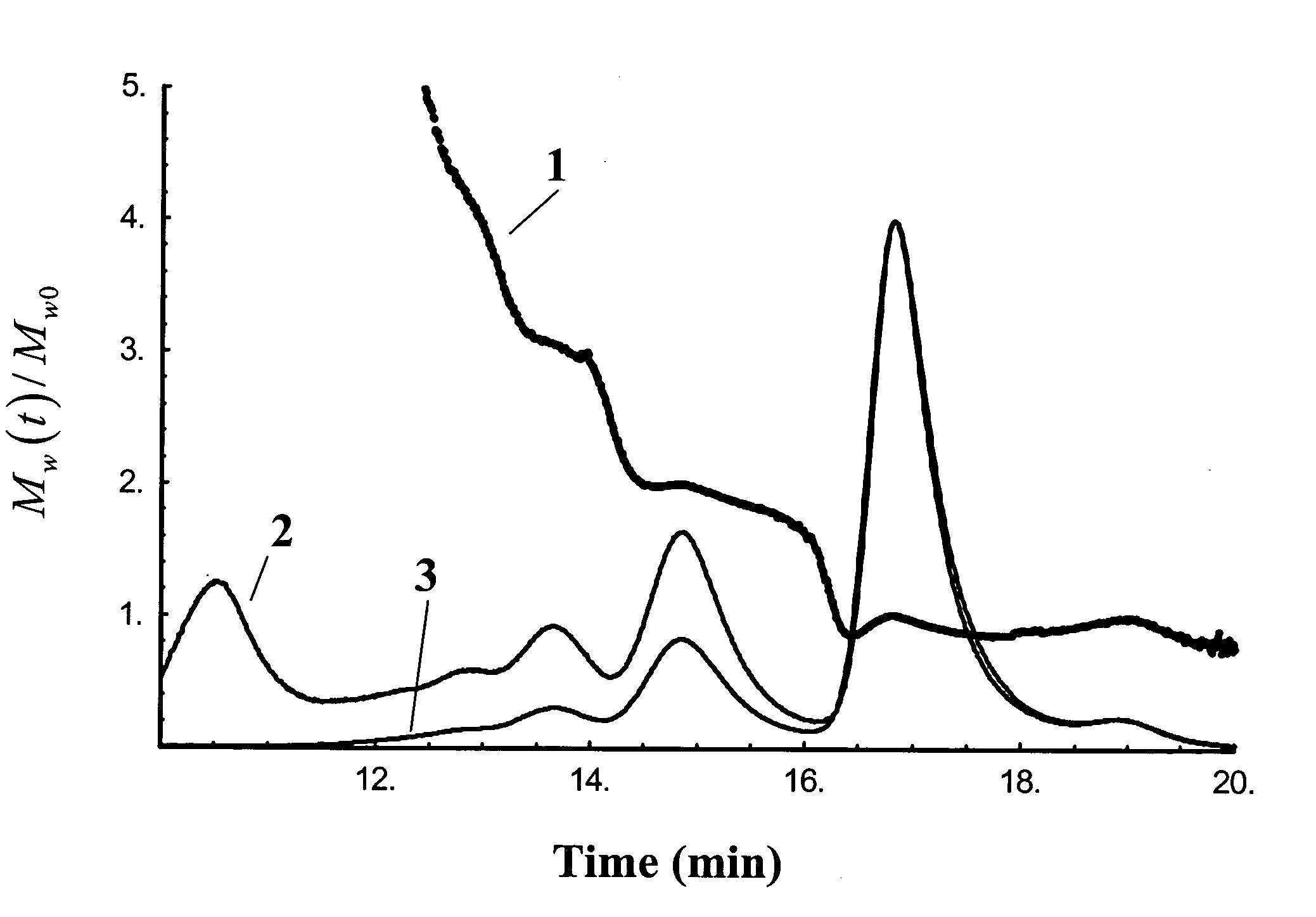Method for correcting the effects of interdetector band broadening
a technology of interdetector band and band broadening, which is applied in the field of correcting the effects of interdetector band broadening, can solve the problems of systematic errors in derived, physical unreasonableness, and rare band-widening corrections, and achieves the effects of improving the determination of intrinsic viscosity measurements, simple, robust and easy to implemen
- Summary
- Abstract
- Description
- Claims
- Application Information
AI Technical Summary
Benefits of technology
Problems solved by technology
Method used
Image
Examples
Embodiment Construction
Molecules in solution are generally characterized by their weight averaged molar mass Mw, their mean square radius <rg2>, and the second virial coefficient A2. The latter is a measure of the interaction between the molecules and the solvent. For unfractionated solutions, these properties may be determined by measuring the manner by which they scatter light using the method described by Bruno Zimm in his seminal 1948 paper that appeared in the Journal of Chemical Physics, volume 16, pages 1093 through 1099. More recently, the method discussed in co-pending Application Ser. No. 10 / 205,637 by Trainoff and Wyatt filed 24 Jul. 2002, in process of issuance, represents an advanced technique that will replace the more traditional Zimm approach.
The light scattered from a small volume of the solution is measured over a range of angles and concentrations. The properties derived from the light scattering measurements are related through the formula developed by Zimm:
R(θ)=K*MwcP(θ)[1−2A...
PUM
 Login to View More
Login to View More Abstract
Description
Claims
Application Information
 Login to View More
Login to View More - R&D
- Intellectual Property
- Life Sciences
- Materials
- Tech Scout
- Unparalleled Data Quality
- Higher Quality Content
- 60% Fewer Hallucinations
Browse by: Latest US Patents, China's latest patents, Technical Efficacy Thesaurus, Application Domain, Technology Topic, Popular Technical Reports.
© 2025 PatSnap. All rights reserved.Legal|Privacy policy|Modern Slavery Act Transparency Statement|Sitemap|About US| Contact US: help@patsnap.com



